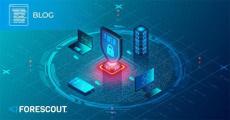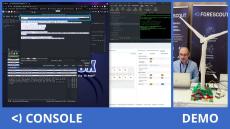#DidYouKnow — Generative AI has taken the world by storm. At Forescout we've also embraced generative AI, but not in the way you would expect. Justin Foster, our CTO, takes us through how we are embracing generative AI and what the future of security can look like.
- January 2025 (1)
- October 2024 (5)
- September 2024 (1)
- August 2024 (5)
- July 2024 (7)
- June 2024 (4)
- May 2024 (9)
- April 2024 (5)
- March 2024 (5)
- February 2024 (4)
- January 2024 (4)
- December 2023 (2)
- November 2023 (2)
- October 2023 (2)
- September 2023 (6)
- August 2023 (2)
- July 2023 (3)
- June 2023 (5)
- May 2023 (4)
- April 2023 (2)
- March 2023 (6)
- February 2023 (2)
- January 2023 (2)
- December 2022 (5)
- November 2022 (4)
- October 2022 (10)
- September 2022 (7)
- August 2022 (5)
- July 2022 (1)
- June 2022 (8)
- May 2022 (4)
- April 2022 (9)
- March 2022 (2)
- February 2022 (5)
- December 2021 (14)
- November 2021 (6)
- October 2021 (4)
- September 2021 (2)
- May 2021 (2)
- April 2021 (1)
- February 2021 (2)
- January 2021 (1)
- December 2020 (2)
- November 2020 (4)
With so many agentless devices being deployed every day, it’s never been harder to protect your network from threats. Forescout delivers actionable information so you can see the devices on your network and take action to prevent them from compromising your enterprise.
Forescout Technologies, Inc. actively defends the Enterprise of Things by identifying, segmenting and enforcing compliance of every connected thing. Fortune 1000 companies trust Forescout as it provides the most widely deployed, enterprise-class platform at scale across IT, IoT, and OT managed and unmanaged devices.
Forescout arms customers with more device intelligence than any other company in the world, allowing organizations across every industry to accurately classify risk, detect anomalies and quickly remediate cyberthreats without disruption of critical business assets. Don’t just see it. Secure it.
See Every Device. Defend Your Entire Network.






















